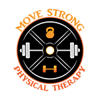My Top 5 Hip Mobility Drills
Hip mobility drills are a commonly discussed topic in the world of physical therapy and strength and conditioning. It is important for daily life tasks as well as athletic performance.
Limited hip mobility can contribute to the low back, knee, ankle as well as upper body issues. Addressing this area in your warm-up and/or during your training session can help on multiple fronts. Here are some hip mobility drills to try.
My Top 5 Hip Mobility Drills
1. ½ Kneeling Couch Stretch
Key Points:
Maintain a straight line from your ear, to shoulder, hip and knee.
It can be performed dynamically for 5-8 reps x 5-8 sec hold or statically for 30 seconds.
Should feel a gentle stretch
I am a big fan of this hip mobility drill. The limited hip extension can be due to different muscles located on the front of the hip and knee such as:
Rectus Femoris
Vastus Lateralis
Tensor Fascia Latae
Psoas
The limited hip extension can cause the body to compensate at the low back to extend through the low back or delegate more stress to the knee and ankle. Hip extension is important for athletic performance for running and power-based movements.
2. Quadruped Hip ER Mobilization
Key Points:
Keep low back flat
Place one knee behind the other. If right ankle behind left knee, push right hip back towards 5 o’clock until a stretch is felt in the glute. If left ankle right knee, push hip back towards 7 o’clock until a stretch is felt in the glute.
The ability for the hips to rotate (internally or externally) is key for rotation during sport for baseball, lacrosse, or any sport that requires rotation.
If the hips can’t rotate in either direction, the body is going to need to move elsewhere and over time, this can delegate that stress to 1 or 2 areas vs throughout the entire body and can affect performance.
3. 90/90 Hip External/Internal Rotation
Key Points:
No pain
Can be performed dynamically for 5-8 reps x 5-8 sec hold or statically for 30 seconds.
Should feel a gentle stretch
If you are experiencing sharp pain, stop.
This hip mobility drill is another option for athletes and active individuals who want to work on both internal and external rotation in one position. One change in the video listed above is that I instruct athletes to rotate towards their back hip vs just leaning backward.
Similar to the benefits of the Quadruped Hip ER Mobilization, the 90/90 Hip External/Internal Rotation targets both hip internal and external rotation necessary for day to day life as well as athletic performance.
4. Quadruped Adductor Rockback
Key Points:
Spread knees out wide.
Keep low back flat.
Sit hips back towards heels.
Stretch should be felt in adductor muscles.
The adductor muscle group (adductor magnus, brevis, longus) can affect hip flexion, hip extension, and hip rotation. Again, this important not just for daily life, but movements on the court or field and in the weight room.
Check out my blog post about The Most Underappreciated Muscle in the Lower Body about the importance of the adductors.
5. Alternating Spiderman Walk with Overhead Reach
Key Points:
Don’t arch through the low back when reaching overhead.
When lunging, don’t allow the knee to go inside the foot.
The Alternating Spiderman Walk with Overhead Reach works on hip extension and hip flexion mobility as well as adductor mobility, thoracic, and shoulder mobility.
This hip mobility drill can be a great “bang for your buck” drill to address multiple areas at once.
If you are looking for quick and easy ways to address your hip mobility for daily life or while in the gym or on the court or field, try giving these options a try. Read more about hip mobility issues here.
Tags:

July 4, 2019


